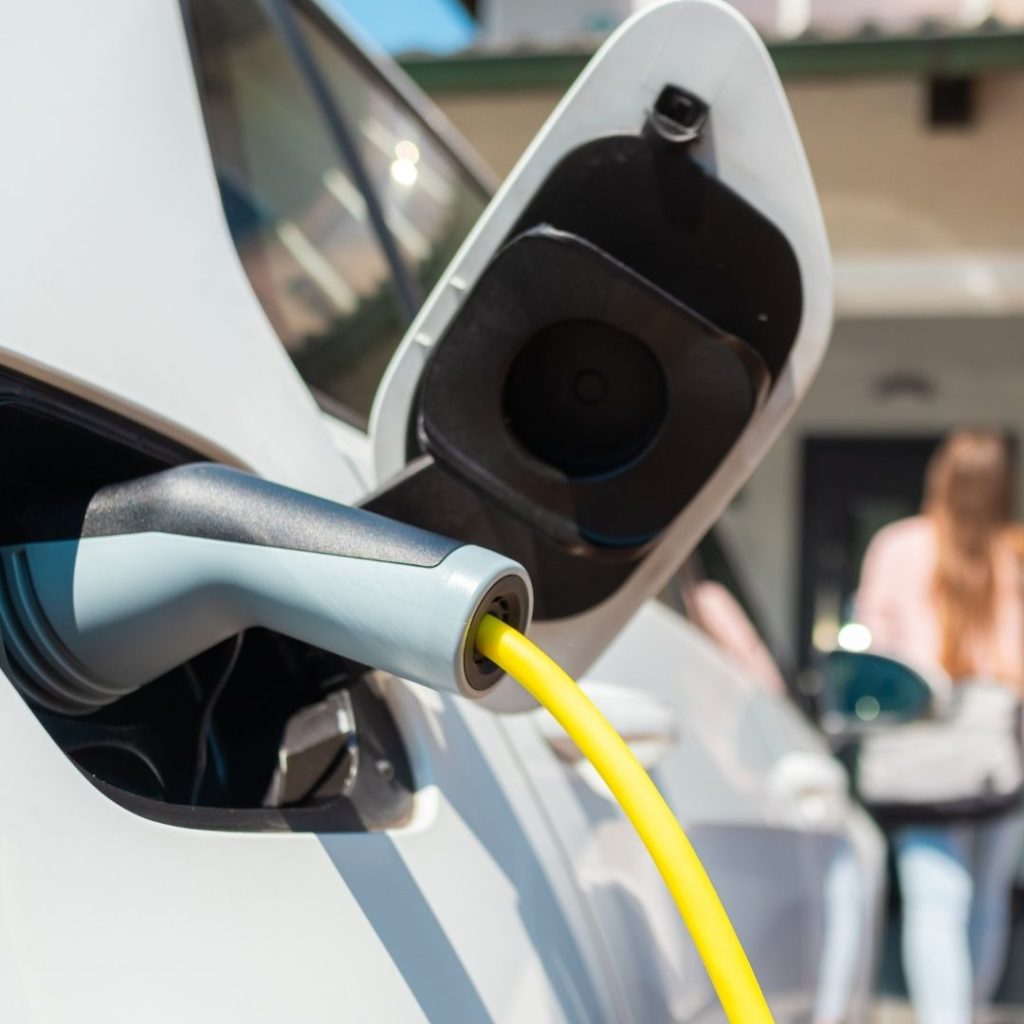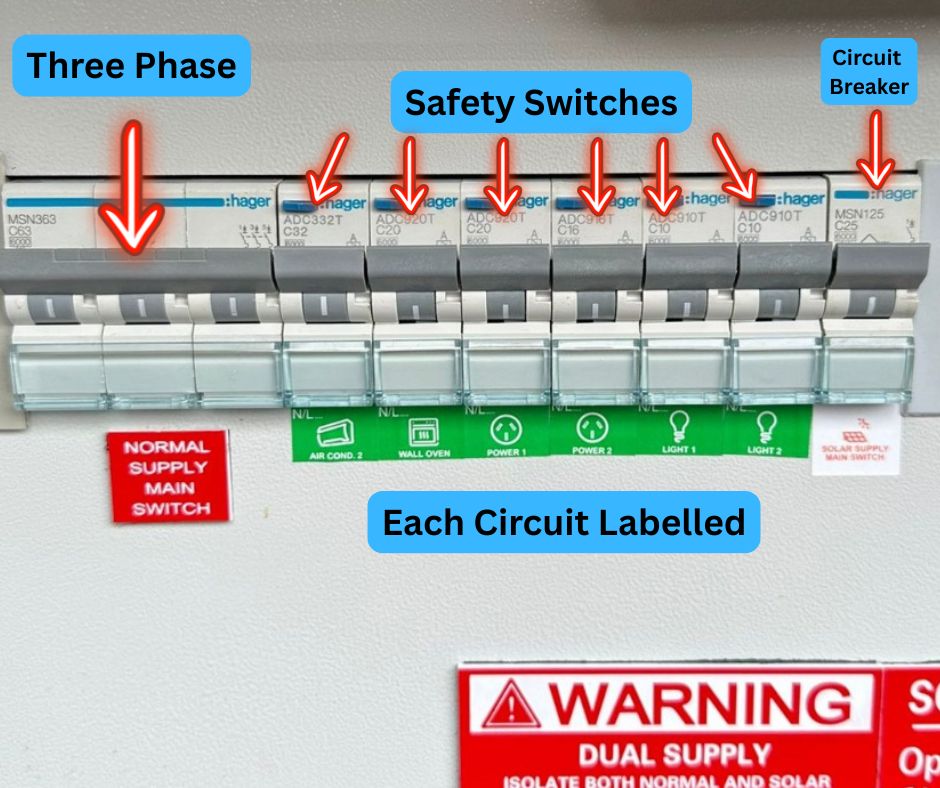Why Upgrading Your Switchboard is Crucial for Safe Home EV Charger Installation
Yes, upgrading your switchboard is essential! In many homes across Melbourne, the installation of an EV charger often necessitates a significant switchboard upgrade. Numerous older switchboards lack the necessary load capacity, do not provide adequate RCD protection, and may not have enough available circuit space required for the safe and compliant installation of an electric vehicle charger. It is imperative to hire a licensed electrician to carry out a detailed inspection and perform a necessary switchboard upgrade. This ensures that your residence can safely manage the charging of your EV without any associated safety risks.

With the rising popularity of electric vehicles in Melbourne, an increasing number of homeowners are choosing to install EV chargers in their garages or driveways. However, many people do not realize that preparing your home’s electrical system is crucial, and this preparation starts with a comprehensive evaluation of your switchboard. It is vital to ensure that your electrical infrastructure can support the demands of an EV charger, as this is key for both safety and efficiency during charging.
At Direct Point Electrical, we have successfully facilitated the installation of numerous EV chargers in areas like Berwick, Narre Warren, and Cranbourne located in Melbourne’s outer east. In nearly every instance, the switchboard is the first component we inspect to ensure it meets all necessary safety and performance standards for effective charging. Our expertise guarantees that each installation complies with local regulations and delivers optimal operational performance.
Understanding the Unique Requirements for EV Charger Installation Beyond Standard Power Points
EV chargers are fundamentally different from regular household appliances, such as toasters or washing machines. Most residential charging units, particularly the 7kW and 22kW models, require:
- A dedicated circuit designed specifically to handle the electrical load efficiently
- RCD protection as mandated by AS/NZS 3000 standards to ensure safety and compliance
- Ample amp capacity, typically ranging from 32A to 50A, to support the charger’s power needs
- Effective load balancing to mitigate the risk of overloading other circuits in your home
Consequently, connecting an EV charger to an outdated fuse box or an overloaded switchboard is not only imprudent; it introduces significant safety hazards and violates current regulations. For detailed guidance on the specific requirements for EV chargers in residential settings,
Identifying the Need for a Switchboard Upgrade: Key Indicators
If your home was built more than two decades ago, there is a high likelihood that your switchboard does not have the capacity necessary to support an EV charger installation. Here are some warning signs we examine during our assessments:
- Old ceramic fuses or asbestos backing, which are both outdated and pose health hazards
- Absence of RCD or safety switch protection, which is crucial for preventing electrical accidents and ensuring safety
- Limited circuit space that restricts the installation of new dedicated circuits needed for EV chargers
- Signs of burn marks, unusual buzzing noises, or frequent tripping when using appliances
- Lack of a 3-phase supply if you plan to install a faster 22kW charger, which demands more power
Any of these indicators signal potential risks for both safety and EV compatibility in your home and should not be ignored.
Note: The Electric Vehicle Council advises that a dedicated circuit be installed for your EV. This precaution helps prevent overloading existing circuits in your home. When establishing a dedicated circuit, consider opting for a 15amp outlet and charger instead of the standard 10amp circuit. This adjustment can enhance your charging rate by 50% and significantly reduce your charging time by a third.

Essential Steps in the Switchboard Upgrade Process for EV Charger Readiness
At Direct Point Electrical, our goal is to streamline the upgrade process, making it as simple and stress-free as possible for our clients:
- Site Assessment – We conduct a thorough inspection of your current switchboard, wiring, and main power supply to identify any shortcomings.
- Load Calculation – We evaluate whether your residence can safely accommodate the additional load imposed by the EV charger.
- Upgrade Planning – If an upgrade is deemed necessary, we will provide a detailed quote for a new compliant switchboard, which will include RCDs, surge protection, and sufficient capacity for the EV charger.
- Documentation & Compliance – We handle all necessary paperwork with your energy distributor (AusNet or United Energy) and provide a Certificate of Electrical Safety upon successful completion of the project.
Depending on the current state and setup of your switchboard, most upgrades can typically be completed within a single day, allowing you to quickly enjoy the convenience and benefits of charging your EV at home.
Understanding Electrical Compliance Requirements for EV Chargers in Victoria
All electrical work performed in Victoria, including the installation of EV chargers, must adhere to the AS/NZS 3000 Wiring Rules. A licensed electrician is required to:
- Implement RCD protection for the dedicated circuit to ensure safety
- Verify that the load from the charger does not exceed the main switch capacity
- File necessary documentation with your energy distributor
- Issue a Certificate of Electrical Safety upon the successful conclusion of the installation
Attempting any DIY or unlicensed installations not only violates the law; it also compromises warranties and can lead to serious fire hazards or denial of insurance claims.
What to Consider When You Already Have Solar Panels or Battery Systems Installed
If you already have solar panels or battery systems in place, that’s excellent! However, it is still crucial to assess how the new EV charger will interact with your existing solar energy system. Effectively balancing the load between solar energy, battery storage, and EV charging requires careful planning and consideration.
We will collaborate closely with you to:
- Schedule charging times that maximize your usage of solar energy
- Confirm that your inverter and battery setup can handle the energy demands of the EV charger
- Recommend suitable charger models that feature smart load management capabilities
Is It Necessary to Upgrade to a 3-Phase Power Supply for EV Charging?
Not necessarily. A 7kW charger typically functions adequately on single-phase power for most users. However, if:
- You are looking for faster charging times
- You own two electric vehicles that require simultaneous charging
- You are running high-load appliances at the same time
… then considering a 3-phase upgrade could be advantageous. We can provide expert guidance on this matter during your initial inspection.
Crucial Factors to Consider for a Successful EV Charger Installation
If you're contemplating the installation of an EV charger at your home, prioritizing the assessment and potential upgrade of your switchboard is critical. At Direct Point Electrical, we offer free site inspections, transparent pricing, and a hassle-free process to ensure safe, efficient, and future-proof EV charging solutions customized to your home’s specific requirements.
Whether you reside in Berwick, Narre Warren, or any other area in Melbourne’s outer east, we have the ideal EV charging solution tailored to meet your unique needs.
EV Charger Installations
The Article: Switchboard Upgrade for Home EV Charger Installation: Do I Need It? first appeared on https://writebuff.com
The Article Home EV Charger Installation: Is a Switchboard Upgrade Necessary? Was Found On https://limitsofstrategy.com



No responses yet